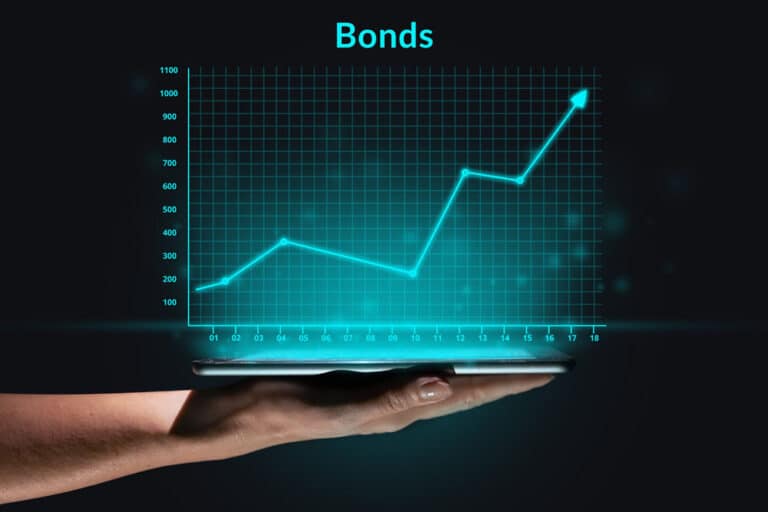
Lynda Schweitzer, US-based co-head of global fixed income at Loomis Sayles gives us her view of global fixed income markets.
Thanks so much for taking the time to speak to us Lynda, can you please tell me a bit about yourself and your role?
Sure, I am co-head of global fixed income at Loomis Sayles. There are three portfolio managers that run the business. Loomis Sayles is set up with distinct product teams and so we are one of those. We have a lot of centralized resources that we draw on, but when it comes down to making decisions, it’s the product team, the investment team that makes those decisions. So myself, Scott Service and David Rolley are the three co-heads. We run about US$27 billion in assets broadly in global aggregate type money and global credit. While we have two distinct business lines, there’s a lot of variation in how much risk we can take, whether it’s active currency, hedged. Our capabilities span the global fixed income opportunity set.

A hard or a soft landing?
I wish I knew the answer to that.
I suspect it is going to be very hard to avoid a hard landing. I think inflation will be persistent. We saw that in the number last week.
Core inflation has not peaked yet and the Fed will need to keep hiking to bring it down. I suspect it is going to be hard to avoid a hard landing. Hikes work with a lag, we know that. So, I suspect it’s going to be difficult to avoid a hard landing. Now any kind of hard landing I think leads to a mild recession. Not looking for a deep recession at all. But I do think hard to fine tune that enough not to have a hard landing.
So do you think the turning point for the Fed might come quite quickly? In the past it’s turned really quickly once it’s seen sentiment change. So could be sort of another surprise in that regard?
My guess is it could, yes, I do think it’ll turn kind of quickly. I think the market has proven this year to change its minds pretty quickly about whether or not they were going to hike or not hike. So I do think it will come quickly. I’m not exactly sure we’ll know when that time will come. It’ll probably be a bad number and that’s barring any kind of external shock. But I do think the market tends to flip on a dime and change their mind so I do think it will be pretty quick.
Do your team have any thoughts on how high inflation might go?
Yes, I think headline has peaked. I think core is close to peaking. It’s hard with wages still showing upward pressure and housing, although housing with the increase in mortgage rates probably is going to start to go the other way. So, we have to be close to peaking on core. Just the market was a bit surprised that it wasn’t last week. That was the expectation. We’ve got to be pretty close.
Also read: Three Floating Rate Bond ETFs – FLOT, QPON, SUBD
And the peak Fed funds rate? That’s tough to call, I know.
Right now we are penciling in about four and a quarter, somewhere between 4.25% and 4.50%, if you use the Fed range as the peak in Fed rates here. So hiking through the end of this year, 75bps this week and then slowing down from there, 50bps, a couple of 25bps moves in 2023. So peaking out end of first quarter around 4.25-4.50%.
So what are your thoughts on where there’s value in the market? What are your preferred securities at the moment?
Value in the market is certainly better. As a global fixed income manager, it makes me very encouraged about the long term, given the change in spreads and higher yields.
I think over the short term we can still have a little bit more volatility and pressure for higher rates or wider credit spreads.
So right now, we’re pretty defensive doing our credit work, looking for those corporate names that could weather volatility, but we’re pretty low overall and overall credit risk.
We are short duration in the major markets, mostly US and starting to look around at maybe some of the emerging markets where yields look very attractive. Emerging markets in general was ahead in the hiking cycle, so perhaps they’re near the end than some of the developed markets. At this point in time with a three to six-month view, it’s hard to get overly excited about anything, just given the macro backdrop and our expectation for more volatility. But a 12-month view, I’m actually pretty excited by the moves that we’ve seen.
That’s so good to hear. I know you mentioned short duration, so are you still looking at fixed rate, short duration as well? That includes government bonds, et cetera?
Yes, we manage it at the overall level and can use either govvies or futures to manage it by market. And we’ve been running short in the US mostly all year. There was a short period of time around the Russian invasion of Ukraine where we did go neutral duration. Old habits die hard we had some fears of the flight to quality rally and there was one that just didn’t last as long as we thought. So we re-established a short and we’ve been playing it from the short side and managing it around the range.
So buying, we bought some duration when we got up towards 350bps the first time and when we went back down to 250bps we sold a little bit. So really just managing it within that range, but always a little bit short.
I wonder if you might talk a little bit about your cash position and if you’re holding more cash and a little bit about what the cash rates are doing in the US perhaps.
We tend not to hold a lot of cash. We keep our cash in the 2 to 3% range. We can always find short treasuries or short corporate bonds, something that doesn’t pose a lot of risk for the portfolio, but offers some kick-up over short rates. But that said, with the rate hikes that we’ve seen, short rates don’t look so unattractive any longer. I don’t think we’ll change our style of sitting in cash. But short rates certainly look a lot more attractive now and with the inversion and the yield curve, staying short seems pretty good.
Is now a good time to buy bonds? That’s the perennial question for a lot of our advisors and high-net-worth investors. My gut feeling is you’re thinking not quite yet?
It depends on your timeframe. If you’re a longer-term investor, I would, and you have a certain amount of money to invest, I’ve done this in my own portfolio. Probably now is not a bad time to put some money to work. I wouldn’t put everything to work. But I think the yields have backed up far enough.
You’re locking in a very attractive yield certainly versus 12 or 24 months ago. So I don’t think it’s a bad time to put some to work, but I would not, as you said, given my comments earlier, I wouldn’t put it all to work here.
I know one of the questions you sent ahead of time was are we perhaps too bearish on bonds and I worry about that. I feel like we have some time. The Fed still has covered a hike. Unemployment still looks very low, the economy still seems very resilient. Inflation, core inflation hasn’t peaked yet.
So I think those are things that still support this path we’re on of the fed hiking pressure on rates higher.
I think it’ll take either a big change in the employment picture or in inflation coming down much faster than we thought, which again is hard to imagine given the series of numbers we had. But it’s a possibility.
I get nervous when it’s a very widely held view that we’re missing something. But it is something we’re watching closely and we were talking about covering some of the duration ahead of the inflation number. Glad we didn’t, but the core inflation not peaking makes me pretty comfortable staying short over the next kind of couple of months.
Is there anything else you’d like to talk about?
I think the couple of things I’d mentioned are risks to, because we’ve had global growth being revised down and inflation being revised up, this entire year that’s been the global phenomenon.
The things we’re most worried about impacting that global growth even more so are the war, but mostly from a European recession concern, given the proximity both to Russia and Ukraine, as well as the possibility of the gas being shut off and prices spiking there and what that does to the economy. So, we’re quite concerned about a European recession and then the knock-on effects globally.
As much as the deep globalisation has been a buzzword for a while, we’re still very much a global world.
So, it’s hard to imagine that a European recession does not have knock-on effects. Also, the zero COVID policy in China and the property market deleveraging. Those are things we’re watching very carefully. The geopolitics, I don’t know how to handicap that. We don’t have an encouraging view on the war resolving anytime soon. The known unknown is how irrational Putin can get around kind of where the war goes. That’s always a wild card that could impact the economy pretty significantly.
Fabulous, thank you, Lynda!

































